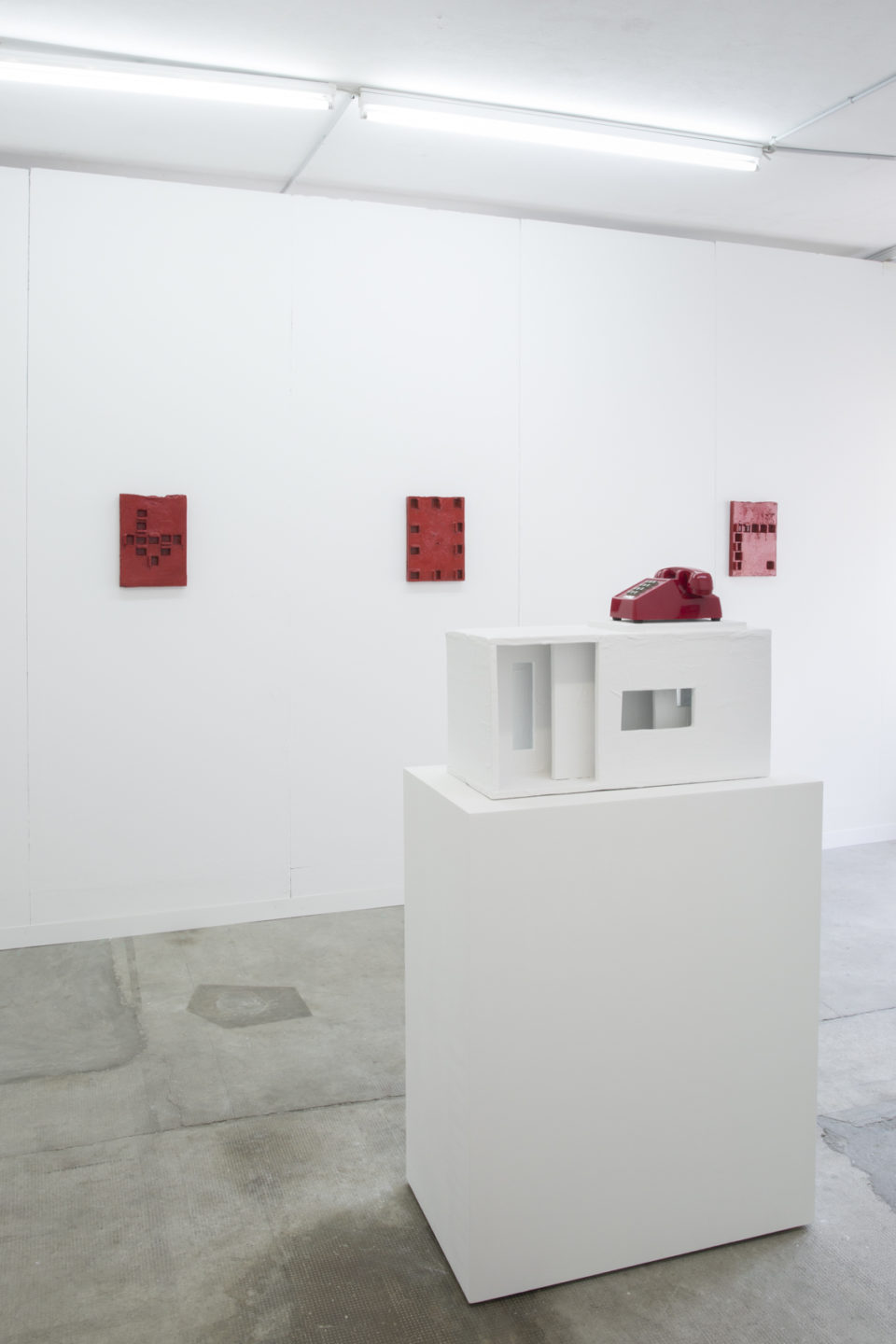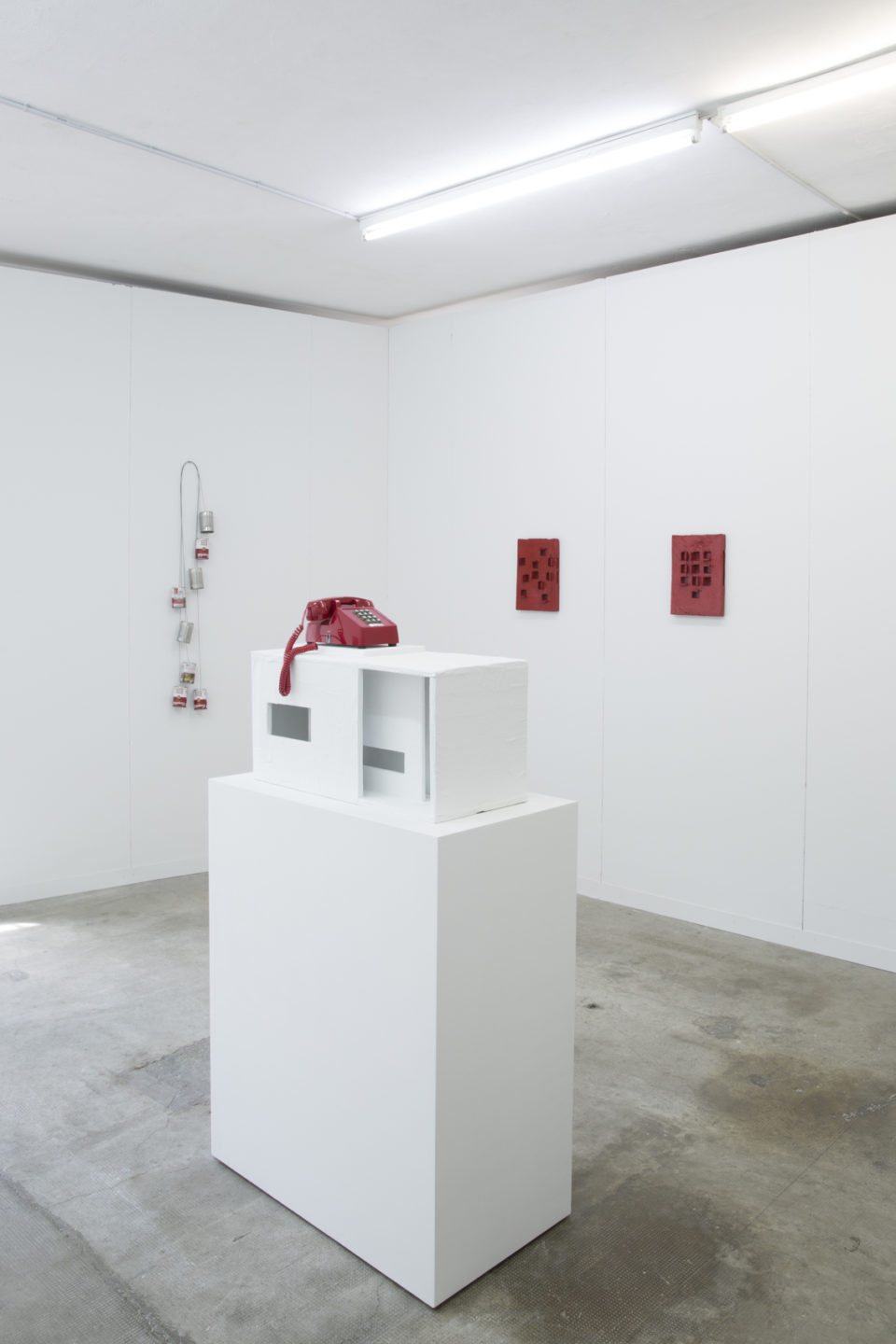2017/06/12 DIALING PATTERNS @ LISTE W/ CLEARING




CLEARING is pleased to present a solo presentation at LISTE by New York based artist Zak Kitnick. In his work, Kitnick (b. 1984 in Los Angeles, California) deals with found patterns and designs, inverting the boundaries between art, architecture, interior design and commodity production. Exploring how these parallel worlds borrow from each other, acquiring and defusing each other’s potential, Kitnick’s work attempts to explore the tenuous boundaries between art and decor. In his work, utilitarian objects-- easy-to-use, easy-to-ignore products of daily life-- are abstracted by the systems that organize them, their structure overwhelming the subject matter. Kitnick’s sculptures look at how ‘form-follows-function’ design became a ‘style.’
For LISTE, Kitnick refers to a simple mode of communication: the invention of the standard Bell Telephone dialing pattern. Years ago Kitnick came across a document outlining the testing of 18 experimental dialing patterns to replace the rotary telephone. As the technology around the rotary telephone changed and no longer dictated a circular form, Bell was set with the task of inventing a new format. What would the future look like? Using a scientific method, measuring the interaction between man and machine, they narrowed it down to the current now universal pattern. The original test pattern variations became a site for the potential of a single object. For the cast aluminum sculptures presented at LISTE, Kitnick reimagines a set of 8 alternative patterns. In the works, dichotomies erupt—haptic/optic, image/object, art/decoration— while also questioning pivotal art historical precedents: the monochrome and the grid. The works indicate an important step in Kitnick’s practice, one that addresses a rotating set of concerns: the Aestheticization of Information, Information as Decoration, Decoration as Organization and Organization as Aestheticization.
In a related series of papier maché sculptures, Kitnick continues to recruit objects of disuse; in this case, telephones. In these sculptures Kitnick, calls on personal and collective memories, the desire to be alone, and for camaraderie, the desire to unplug, disengage, and to remain active. Kitnick creates a quasi private, quasi public, quasi institutional space, somewhere between connection and alienation. Finding connections between artwork and viewer, between institution and city, between headspace and auxiliary brain, Kitnick’s works are a meditation on modern media, on how we engage with each other though objects. The phone is an object that joins the head to the hand. Here again, Kitnick embraces the cracks, fissures, and imperfections of both mass-produced and hand-made objects, examining objects that either lie outside our field of vision or are rendered invisible by their ubiquity.
In another body of work Kitnick layers sheets of cut steel, creating negative space for light and air to travel through. The bunker-like reinforcements deal with the built environment while proceeding from the legacies of Minimalism. By again employing visual vocabulary such as the monochrome, the binary logic of positive/negative and vertical/horizontal, he imagines a play between the aesthetic and the functional. Drawing on collective fantasies surrounding war, the works are neither slick nor expressionist, they have the potential to be functional; they recall doomsday preppers. Yet through a series of cuts and layers, poetic compositions emerge that are both fluid and fragmented, that explore the divisions of interior and exterior. The cuts here are into the wall-like planes of the sculpture, problematizing the borders between art and architecture, or between autonomous and site-specific artwork.
Maintaining a practice that positions sculpture in dialogue with design and architecture, Kitnick continues mapping the intersections of function and ornamentation, reminding us that being "in touch” has always been tactile.